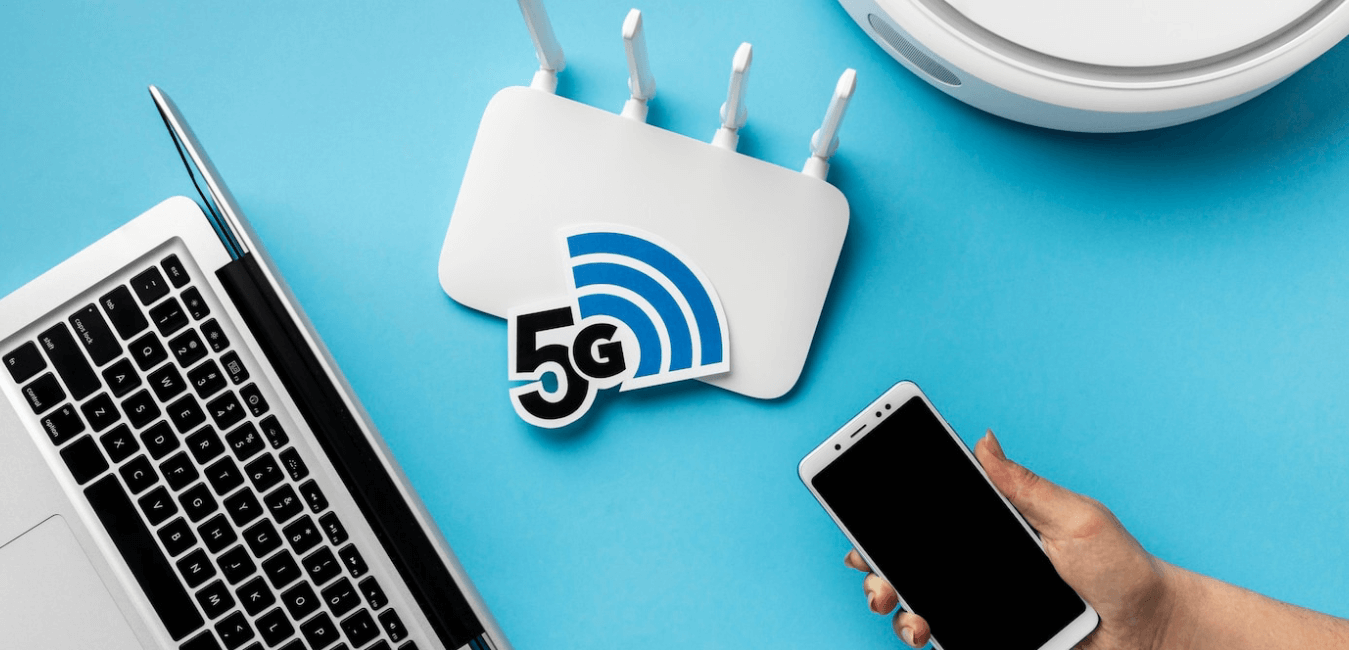
The 5G Revolution: Beyond Just Faster Speeds
When most people hear “5G,” they immediately think “faster internet on my phone.” While that’s certainly true, the impact of 5G technology extends far beyond simply loading websites more quickly. In 2025, 5G has fundamentally transformed how we conceive, develop, and experience digital products.
With global 5G adoption now exceeding 65% in developed markets and rollout accelerating worldwide, we’re witnessing the dawn of an entirely new era in web and mobile app development.
Understanding 5G: The Technical Revolution
Before diving into the implications for development, let’s clarify what makes 5G so revolutionary:
- Unprecedented speed: Peak speeds up to 10 Gbps—up to 100 times faster than 4G
- Ultra-low latency: Response times as low as 1 millisecond (compared to 50ms on 4G)
- Massive connectivity: Support for up to 1 million devices per square kilometer
- Enhanced reliability: Network availability of 99.999%
- Improved energy efficiency: 90% reduction in network energy usage
These aren’t just incremental improvements—they represent a quantum leap that enables entirely new categories of applications and experiences that were previously impossible.
How 5G Is Reshaping User Expectations
The End of Loading Times
Remember waiting for websites to load? For the 5G generation, such delays are becoming incomprehensible. In 2025, users expect instantaneous loading and real-time interaction—regardless of content complexity.
Always-On, Always-Connected Experiences
The reliability and ubiquity of 5G have created an expectation of seamless continuity. Users now expect their digital experiences to follow them across locations and devices without interruption or performance degradation.
Rich Media as Standard
High-definition video, 3D content, and immersive audio—once considered “premium” content types requiring special consideration—are now baseline expectations for all digital experiences.
Location-Independence for Complex Applications
Applications that once required powerful desktop hardware or local servers now run effortlessly on mobile devices, with processing offloaded to edge computing resources connected via 5G networks.
Technical Considerations for Developers in the 5G Era
Bandwidth Abundance Changes Everything
With 5G providing 100x more bandwidth than 4G, many traditional development best practices around asset optimization need reconsideration. However, this doesn’t mean abandoning efficiency—it means rethinking how we allocate resources.
Development Implications:
- Image compression remains valuable but can prioritize quality over file size
- Pre-loading larger assets becomes more feasible
- Higher-resolution assets become standard, not exceptional
- Video content can be embedded more liberally
- Progressive loading becomes less necessary for many applications
Latency Reduction Enables New Interaction Models
Ultra-low latency (1ms) fundamentally changes what’s possible for real-time interactions. Actions that previously required client-side processing to feel responsive can now leverage server resources without perceptible delay.
Development Implications:
- Remote rendering for complex visualizations becomes viable
- Cloud processing for AI and machine learning features feels instantaneous
- Real-time collaboration features work seamlessly
- Complex calculations can be offloaded while maintaining responsiveness
- Server-side rendering becomes more attractive for dynamic content
Edge Computing Integration
5G’s architecture incorporates edge computing—processing data closer to end users rather than in centralized data centers. This creates new architectural possibilities for developers.
Development Implications:
- Applications can offload intensive processing to nearby edge servers
- Sensitive data processing can happen locally at the edge, enhancing privacy
- Distributed computing approaches become more viable for mobile applications
- Complex AI processing can happen without round-trips to distant data centers
Network Slicing for Optimized Performance
5G introduces “network slicing”—the ability to create virtual networks with specific characteristics (bandwidth, latency, reliability) for different application types.
Development Implications:
- Applications can request network resources based on their specific needs
- Critical functions can receive guaranteed performance levels
- Developers can build with more predictable performance expectations
- Different application components can utilize different network characteristics
Opportunities 5G Creates for Businesses
Immersive Experiences at Scale
Augmented Reality (AR)
With 5G, AR applications can access cloud-based processing power while maintaining real-time responsiveness. This enables:
- Detailed, photorealistic AR overlays
- Persistent AR environments shared across users
- Complex AR interactions without device heating or battery drain
- Integration of live data streams into AR experiences
Virtual Reality (VR)
5G eliminates major barriers to mobile VR adoption:
- High-fidelity VR can be streamed rather than processed locally
- Untethered VR experiences become truly portable
- Multi-user VR environments with perfect synchronization
- Haptic feedback with near-zero latency
IoT Integration Without Compromise
The enhanced connectivity of 5G enables true Internet of Things (IoT) integration with web and mobile applications:
- Real-time data from thousands of sensors
- Video feeds from multiple sources simultaneously
- Complex control systems with instant response
- Predictive systems leveraging real-time data analysis
Location-Based Services Reinvented
5G’s precision positioning (down to centimeter accuracy) combined with edge computing creates opportunities for hyperlocal experiences:
- Indoor navigation with perfect accuracy
- Location-triggered content delivery
- Spatial anchoring of digital content
- Precise tracking of assets and inventory
Cloud-Native Applications Everywhere
The distinction between “mobile app” and “web app” continues to blur as 5G enables true computing ubiquity:
- Applications can offload heavy processing to the cloud
- Consistent experiences across devices regardless of local hardware
- Always-current applications with seamless updates
- Device limitations become increasingly irrelevant
Real-World 5G Application Examples
Enhanced Navigation Apps
With better connectivity and faster speed, 5G ensures accurate real-time results that dramatically improve navigation apps:
- Real-time traffic visualization using live camera feeds
- Centimeter-accurate positioning
- Augmented reality navigation overlays
- Predictive routing using real-time data from connected vehicles
Next-Generation E-Commerce
5G transforms online shopping into an immersive, confidence-building experience:
- Virtual try-on experiences with perfect rendering
- Instant visual search capabilities
- Live shopping with zero latency interaction
- AR product visualization in your actual space
Collaborative Work Applications
Remote work becomes truly location-independent with 5G:
- Real-time document co-editing without delays
- High-definition video conferencing with dozens of participants
- Virtual offices with persistent connections
- Complex collaborative design tools with instant updates
Industrial and Enterprise Applications
Beyond consumer applications, 5G enables critical business functions:
- Remote equipment operation with haptic feedback
- Real-time safety monitoring with AI analysis
- Predictive maintenance using thousands of sensors
- Virtual training in photorealistic environments
How Our Development Agency Is Preparing for the 5G Future
At our web and mobile app development company, we’re helping clients capitalize on the 5G revolution through:
5G Readiness Audits We evaluate existing applications to identify opportunities for 5G enhancement and develop strategic roadmaps for implementation.
Edge Computing Architecture Our developers design systems that intelligently distribute processing between devices, edge servers, and cloud resources for optimal performance.
Immersive Experience Development We’ve built specialized teams focused on AR/VR experiences that leverage 5G capabilities for transformative user experiences.
Performance Optimization Beyond Compression While traditional optimization focused on minimizing data transfer, our 5G optimization strategies balance quality, responsiveness, and bandwidth utilization.
Future-Proof Development Practices We implement flexible architectures that can adapt as 5G capabilities continue to evolve and become more widely available.
Preparing Your Business for the 5G Transformation
The 5G revolution isn’t coming—it’s here. Businesses that adapt their digital strategies to leverage these new capabilities will gain significant competitive advantages.
Whether you’re looking to enhance existing applications or build entirely new experiences that weren’t previously possible, our team can help you navigate the opportunities and challenges of development in the 5G era.
Contact us today for a consultation on how we can help your business harness the transformative power of 5G technology through innovative web and mobile applications.
Related Posts
Mobile-First Development: Why It’s Essential for Business Success in 2025
The Mobile Revolution: No Longer Just a Trend Remember when having a mobile-friendly website was…









